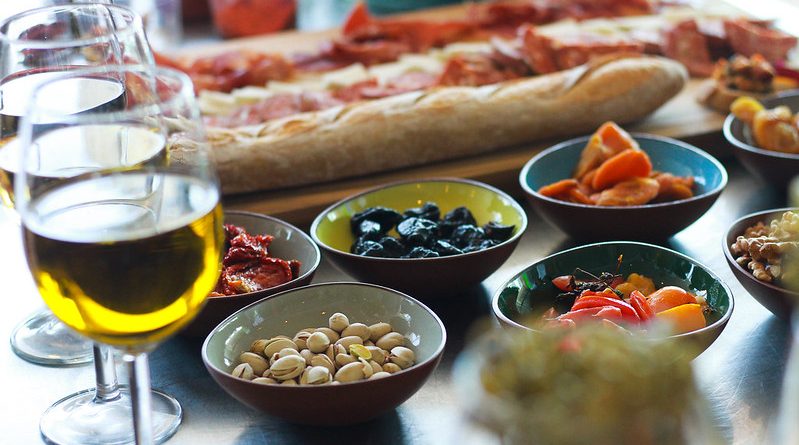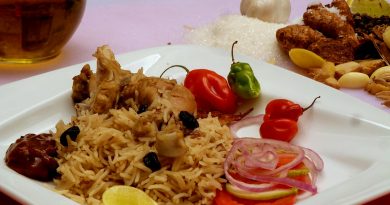La Cocina – The Cultural Melting Pot of Southwestern Cuisine
Food Facts
Cuisines: Fusion of Native American, Colonial Spanish, Aztec and 19th century American traders
Tastes: Hot, spicy, and delicious
Staples: Hot chiles and corn breads
Top Dish: Posole, a flavoured corn stew traditionally eaten for festivals
Serving Suggestion: Douse down a hot chili dish with a margarita
The food of the Southwest is all about big flavours in big landscapes. A fusion of 4 different cultures – Aztec, Native American, Spanish and American – taking place over as many centuries has evolved into what is today, quite simply, a taste sensation. But throw out any preconceptions you have about enchiladas and burritos or – even worse – Tex-Mex. The diluted, fast food version that you’re likely to have experienced in the past (although you find plenty of this on the neon-lit strips, especially on the approach into towns) has no bearing on the mouthwatering gastronomy of authentic Southwestern cuisine.
The history of this extraordinary food reads like a recipe in itself. Take the Native American Puebloan’s staples of corn (maize), squash and beans, plus their elk, bison and venison. Throw in some Spanish colonisers, fresh from Mexico and bringing with them an aromatic Aztec influence, as well as their own basics – beef, rice, wheat, cheese, butter and sugar. Finally, stir in some rugged American traders and fur hunters, opening up the Santa Fe Trail in the early 1800s and bringing to the region cowboy cuisine – one-pot trail cooking. Allow to simmer for a few centuries, the flavours melding and fusing. And there you have La Cocina, Southwestern cooking.
Hot Stuff
Of course, it all begins and ends with the chile. Found in everything from tacos to beer to chocolate to ice cream, the chile is practically synonymous with the cuisine of the Southwest; it is the region’s primary agricultural product and is closely intertwined with the culinary history of the place, featuring heavily in traditional Native American cooking. Strings of ristras – dried red chiles – hang in the doorways of restaurants and homes alike, simultaneously decorative and tempting. You don’t need to have tastebuds of steel to stand the heat – chiles come in many varieties and levels of fieriness, measured in Scoville Units. Bell peppers rate a measly zero on this scale, while jalapenos are around a sizzling 5000, and other varieties have been known to come in at an eye-watering, brain-exploding 577,000 Scoville Units.
“Red or white?” is commonly asked of wine, so it may take a moment of mental adjustment the first time you are asked “Red or green?” in a Southwestern eatery. It’s not that choices are limited to Merlot or Midori – rather, the question refers to whether you want your sauce made with dried (red) or fresh (green) chile, but the heat of either will depend more on the variety, where and in what season they were grown. Asking for “Christmas” allows you to try both options, served side-by-side.
Kaleidoscope Corn
Corn is such an essential part of this style of food that it is revered in Native American dances and celebrations. As the staple that has enabled cultures in the area to sustain life for thousands of years, corn is also seen symbolically as representing life itself – from planting to when the cornstalks dry out in the fields, leaving behind new kernels to continue the cycle. Native Americans instructed the Spanish conquerors in the harvesting and use of corn – roasting it in clay pits, making cornmeal, hominy (dried corn) and posole (a stew made from hominy), as well as the dough for tortillas. Corn in the Southwest is grown in six colours including – patriotically enough – red, white and blue. Blue corn is the most distinctive and highly prized of these, and if you’re in Santa Fe, check out the eponomously named café on Water St, which dishes up massive servings of locally authentic food and makes a great margarita to wash it all down with.
A visit to an Indian pueblo is almost certainly a must on any visitor to the Southwest’s itinerary, and observing traditional bread making – plus, of course, sampling the results – is essential to such a visit. Large, dome shaped hornos (outdoor ovens) are heated up and bran is used to test when they are at the right temperature. The bread dough is inserted through the archway mouth of the oven, and the end result is delicious. Navajo fry bread – flattened dough which is deep-fried – is also tasty, mainly served at Indian feasts and special occasions. Navajo tacos use this base and load them up with beans, cheese, tomatoes, lettuce and, of course, chiles.
With an appetite the size of the Grand Canyon, you could happily eat your way from one end of the Southwest to the other, so here’s a few ideas on what to look out for:
Chorizo burrito – also known as a breakfast burrito, there is no better way to start to the day. A rolled tortilla stuffed with scrambled eggs, potatoes, spring onions (scallions), red or green chile, cheese and chorizo (a spicy sausage) Variations may offer a different type of sausage – elk is sensational.
Huevos rancheros – a corn tortilla smothered with fried eggs, cheese, red or green chile and dark pink or purple pinto beans
Tamales – seasoned meat and cornmeal mush, wrapped in cornhusks and steamed to retain the juices
Sopaipillas – a light, puffy pastry, deep-fried in oil and served hot with butter and honey. They’re also sometimes served stuffed with chiles, cheese, beans and meat.
Fajitas – strips of marinated beef or chicken, served sizzling with tortillas, beans, guacamole, salsa, onions & peppers.
Carne adovada – strips of pork marinated in red chile and other seasonings, baked until tender
Green chile stew – The ubiquitous chile, cooked into a stew, chunked up with meat, beans and potatoes
Posole – a rustic corn stew, flavoured with herbs, spices and chile, to which pork or beef is sometimes added. Traditionally eaten during the holiday season, it is believed to bring good luck for the coming year if eaten on New Year’s Eve
Chile rellenos – stuffed peppers, deep-fried and topped with green chile sauce
The rustic, wholesome flavours and textures of the Southwest have of course evolved with modern day availability of non-local ingredients, plus the innovation and experimentation of cutting-edge chefs. Nouvelle Southwestern cuisine offers a subtle fusion of traditional influences and modern day restraint. Examples include marrying seafood or exotic meats, rather than pork or beans, to local flavours, resulting in such delicacies as shrimp tacos and barbequed duck quesadillas. The Coyote Café in Santa Fe is a top-notch example – pricey, but well worth it.
Don’t fret if you really can’t face another chile – Utah, in particular, is influenced less than any other Southwest state by indigenous influences, its Mormon roots lingering in blander, more stodgy fare. And of course, any major town in the southwest is going to have the usual cosmopolitan array of restaurants representing all ethnicities, so you really can clear your palate in preparation for the next fiery onslaught.
More Information
Gourmet on Tour
Offers a year-round “Flavours of Santa Fe” cooking trip, so that you can experience the taste of the Southwest first hand and participate in producing authentic foods.
The Cooking Post
An online shopping service linked to a pueblo, so that you can order salsas, blue corn products and so on, knowing that your money is assisting the preservation of a unique culture
The Coyote Café
H as current menus and a mail order service for the gastronomic delights available in the affiliated Coyote General Store.
Guide By Sarah Rodrigues




